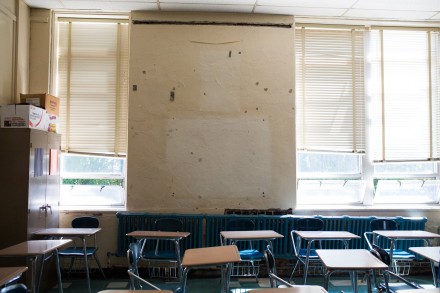
From Elizabeth A. Harris and Kristin Hussey, The New York Times:
The two Connecticut school districts sit side by side along Long Island Sound. Both spend more than the national average on their students. They prepare their pupils for the same statewide tests. Their teachers, like virtually all the teachers in the state, earn the same high marks on evaluations.
That is where the similarities end: In Fairfield, a mostly white suburb where the median income is $120,000, 94 percent of students graduate from high school on time. In Bridgeport, the state’s most populous and one of its poorest cities, the graduation rate is 63 percent. Fifth graders in Bridgeport, where most people are black or Hispanic, often read at kindergarten level, one of their teachers recently testified during a trial over school funding inequities.Seemingly intractable contrasts like those last week led Judge Thomas G. Moukawsher to tell the state that it had 180 days in which to rethink almost its entire system of education. Ruling in a case known as Connecticut Coalition for Justice in Education Funding v. Rell, Judge Moukawsher of State Superior Court in Hartford said the state was allowing children in poor districts to languish, while their wealthier neighbors soared.
Full story here.


Just more liberal bullshit. Tell us something we don’t know.
And Mayor Joe Ganim is going to sit by and say and nothing about BOE President Dennis Bradley and the conditions that are listed in New York Times Reporters Chronicle Bridgeport Education Gap.
Joe Ganim is an EMPTY SUIT.
I am not kidding, but this looks like my former homeroom from sophomore to senior year.
I am bothered by the comments of Fairfield’s school board chair, Philip Dwyer. They offend me, but I confess I cannot state quite why. So I write to ask what others think of our neighbor’s remarks about schools, cities and towns.
Could the crowd here on OIB comment:
— What is the essential meaning of Mr. Dwyer’s comments?
— What is their weight?
— What is their significance to the statewide school funding issue before us?
— Is Mr. Dwyer simply defending Fairfield and towns like it, or is he reaching out in any way Bridgeport and other cities might find useful? Do his comments help lead Connecticut to a solution?
Here is the excerpt to which I refer:
— — — NYT Copy Follows — — —
Philip Dwyer, the chairman of Fairfield’s Board of Education, said on Friday he felt [Hartford Superior Court Judge Thomas Moukawsher’s] view of Connecticut’s system lacked nuance.
“The problem I have is his writing almost encourages the legislature to boil this down to an urban versus suburban question,” Mr. Dwyer said. “That would avoid the fundamental question of what is a more creative way to fund our constitutional obligation that every child deserves a free and appropriate education. This ‘we’ versus ‘they’ approach his decision sets us on is a path I think is a mistake.”
— — — END NYT EXCERPT — — —